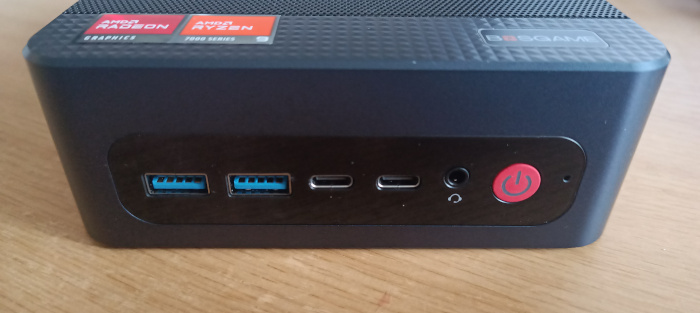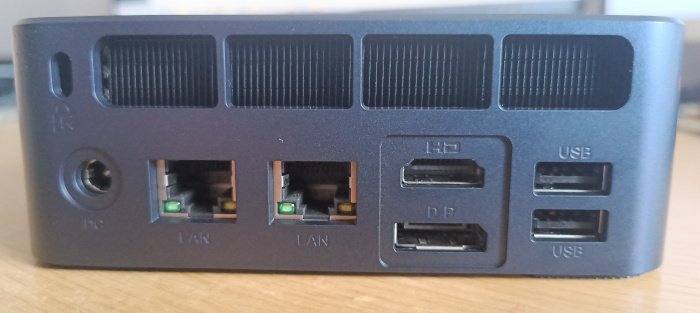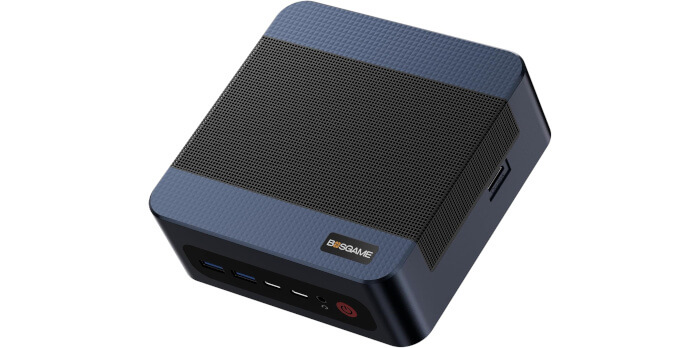This is a new series looking at the BOSGAME M4 Plus Mini PC running Linux. In this series, I examine every aspect of this Mini PC in detail from a Linux perspective. I’ll compare the machine with other machines to put the results into context.
The BOSGAME M4 Plus Mini PC is a powerful computer based on an AMD Ryzen 9 7940HS processor with integrated Radeon 780M graphics. At the time of writing, the machine retails for £479. It’s therefore significantly cheaper than some of the other mini PCs I’m currently writing about. The machine came with 32GB of RAM and 1TB NVMe disk which will be sufficient for most use cases.
Design
The M4 sports a classic scale NUC design with easily upgradable memory and storage. The machine can be mounted on the back of a monitor. The case is an all plastic affair, but its more than sufficient for most uses.

From left to right, the front of the machine hosts two USB 3.2 2×1 (10GBps) USB ports, a USB-C 4K@60Hz port, a USB4 8K@60Hz port, an audio jack, and a red power button. Like many other mini PCs, the two USB-C type ports don’t have markings to indicate which is which.
During my evaluation, I connected a variety of monitors to the machine including two portable monitors to the USB-C ports. The machine had no problems providing power to these monitor through USB.
The right hand side hosts an OcuLink interface which offers eGPU support. The OCuLink port lets you connect external dedicated graphics cards, external storage arrays, and expansion cards. You get about 90% performance using the port.
The rear port allocation is good but there’s room for improvement. There are two USB 2.0 ports for mouse and keyboard use, HDMI 2.0 and DisplayPort 1.4 outputs, and dual 2.5 GbE LAN ports. I’d prefer one of those USB 2.0 ports replaced with a faster port given that I use a keyboard/mouse switch so only need a single USB port for input. Some mini PCs come without any USB 2.0 ports these days.

The case design helps to keep the CPU and components cool. Air is drawn in from the underside of the machines and then moved out via the perforated top panel as well as through four slots on the rear above the I/O ports.
One attribute often not covered adequately in reviews is a machine’s noise. I always prefer a machine to be as quiet as possible. The M4 is certainly not the quietest mini PC I’ve tested recently, but it’s still a quiet machine and doesn’t ramp up like some other mini PCs can.
There are BIOS options that let you fix the fan speed at a quiet setting but you’ll need to reduce the performance setting if you go down that route. Even with the quiet BIOS setting, the fan is audible from 1m in a very quiet room.
My machine came with a UK plug.
Next page: Page 2 – First Impressions running Linux
Pages in this article:
Page 1 – Introduction and Design
Page 2 – First Impressions running Linux
Page 3 – Interrogation of the System
Complete list of articles in this series:
| BOSGAME M4 Plus Mini PC | |
|---|---|
| Introduction | Introduction to the series and interrogation of the machine |
